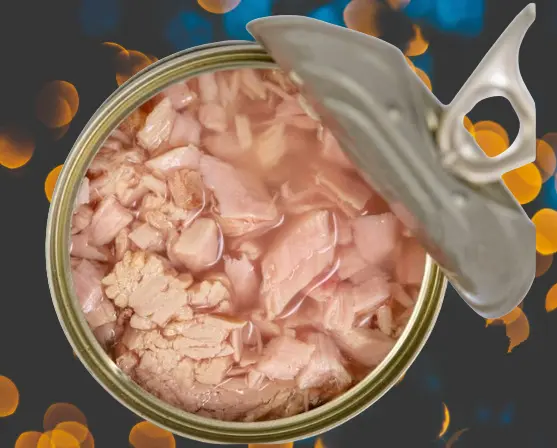10 Best Ways to Protect From Vitamin D Deficiency

Vitamin D is very important for our body to absorb calcium. Without enough vitamin D, you can develop bone diseases like rickets in children and osteomalacia in adults. It may raise the risk of osteoporosis.

Therefore, it’s important to maintain adequate vitamin D levels. Unfortunately, vitamin D deficiency often goes undiagnosed because it doesn’t show severe symptoms. However, there are some signs of vitamin D
deficiency that you need to be aware of.
Signs of Vitamin D Deficiency:-
Feeling Tired
Low vitamin D can make you feel very tired and mess up your sleep leading to severe fatigue and exhaustion.
Joint Pain
Vitamin D helps your body absorb calcium, which is essential for healthy bones. Without enough vitamin D, your bones and joints can hurt, especially in the ribs, legs, and joints.
Weak Muscles
If you do not take enough vitamin D then it may affects muscle function, causing weakness, cramps, and a heavy feeling in the knees due to calcium deficiency.
Mood Changes
Our brain has vitamin D receptors. Low levels can lead to mood disorders like depression and affect nerve cell function. So Low vitamin D may lead to mood swings and even depression.
Slow Wound Healing
If you don’t have enough vitamin D, your wounds may heal slowly. Slow healing wounds might indicate a vitamin D deficiency. Vitamin D helps fight infections and control inflammation, which are essential for new skin growth.
Back Pain
A lack of vitamin D can cause back pain because your bones aren’t as strong . It’s because of low calcium levels and poor bone health.
Frequent Infections
Low vitamin D can weaken your immune system, causing you to get sick more often. Vitamin D is important for a healthy immune system. Frequent illnesses could signal a deficiency.
Hair Loss
Vitamin D deficiency can lead to hair loss. A deficiency in vitamin D can affect hair follicles, leading to hair loss and baldness.
How to Get Vitamin D:-
1. Sun Exposure
Try to spend 10-30 minutes in the sun a few times a week. The exact time you need depends on your skin type, where you live, and the time of day. Lighter skin makes vitamin D faster than darker skin.

2. Mushrooms
Mushrooms are a good source of vitamin D, especially when they are open to receiving sunlight or UV light. Some mushrooms are grown under UV light, which increases their vitamin D. You can also increase the vitamin D in fresh mushrooms by placing them in direct sunlight for about 30 minutes to an hour with the gills facing up.

You can add mushrooms to your meals for more vitamin D. It can be used in salads, soups, stir-fries, or on pizzas. Cooking doesn’t reduce their vitamin D, so enjoy it in various dishes. It can also be added as mushroom powder to smoothies, soups, or sauces to boost your vitamin D intake.
3. Whole eggs
Whole eggs are a good source of vitamin D, mainly when you eat the yolk. Here are some simple ways to include whole eggs in your diet to boost your vitamin D intake:

- Boiled Eggs: Hard-boiled or soft-boiled eggs make a quick and easy snack.
- Scrambled Eggs: Prepare scrambled eggs for breakfast or a light meal.
- Omelettes: Make omelettes with your favorite vegetables and cheese.
- Baked Goods: Use whole eggs in baking recipes like muffins, cakes, or bread.
- Salads: Add sliced hard-boiled eggs to salads for extra protein and vitamin D.
- Egg Sandwiches: Make sandwiches or wraps with scrambled or fried eggs.
- Egg Curry: Prepare an egg curry using boiled eggs for a flavorful dish.
4. Fortified Yogurt
Yogurt can be a good source of vitamin D, basically when fortified. “Fortified” means that vitamins or minerals have been added to a food product that originally didn’t have them in significant amounts. For yogurt, this means that extra vitamin D has been added during the manufacturing process to increase its nutritional value.

Fortified yogurt is a good source of vitamin D, which is important for strong bones and overall health. When you buy yogurt, check the label to see if it’s fortified with vitamin D.
5. Salmon Fish
Salmon is a fatty fish which is rich in vitamin D, which is good for your bones and overall health. Eat salmon to boost your vitamin D levels. You can grill, bake, or add it to salads and sandwiches for a tasty meal.

6. Cow Milk
Cow’s milk is often fortified with vitamin D. Drinking a glass helps keep your vitamin D levels up, which is good for your bones and overall health. You can enjoy cow’s milk on its own, in cereal, or in your favorite recipes.
7. Almond milk
Almond milk is an alternative to cow milk . Almond milk does not naturally contain vitamin D. Almond milk can be fortified with vitamin D, making it a good source of this nutrient. When you buy almond milk, check for brands with added vitamin D. You can drink it, add it to cereals and smoothies, or use it in cooking and baking.

8. Oatmeal
Oatmeal is made from oats that have been hulled, steamed, and flattened or ground. Oatmeal is a popular breakfast food due to its high fiber content and various vitamins and minerals.

Oatmeal itself does not naturally contain vitamin D. However, some brands fortify their oatmeal with vitamin D, which makes a good source of this essential nutrient. Prepare oatmeal by cooking it with water or milk. Using fortified cow’s milk or fortified almond milk can further increase your vitamin D intake.
9. Canned tuna
Canned tuna provides vitamin D, which is very important for bones to become healthy. If you don’t like fresh fish, canned tuna can be an easy and convenient way to boost your vitamin D levels. You can add it in your meal as salads, sandwiches, or pasta for a tasty and healthy meal.

10. Staying hydrated
Staying hydrated helps your body absorb and use vitamin D effectively. Drinking enough water supports overall health and aids in the proper functioning of your cells, which is essential for vitamin D metabolism.

Testing For Vitamin D
The blood test 25-hydroxyvitamin D test, measures the level of 25-hydroxyvitamin D in your blood, which is the most accurate way to determine your vitamin D status. Visit your doctor and request a blood test to measure your vitamin D levels. This is the most accurate way. You can use at-home vitamin D test kits available online or at pharmacies. Follow the instructions to collect a sample and send it to a lab.
Be aware of symptoms of deficiency like fatigue, bone pain, and muscle weakness, and consult a doctor if they appear.











